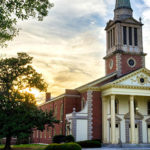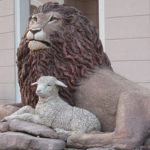(ABP) — The United States’ habit of Christmas craziness began, just like reminders of the holiday season itself, early this year. You know what I mean — the perennial cry that someone or some group (usually one’s ideological opponent, whose perfidy is a perfect foil for end-of-year fundraising) is conspiring, like the Grinch, to steal Christmas. How sad to pick a fight over a holiday (and a holy day) that commemorates the advent of the Prince of Peace and during a season in which about a dozen different religious groups observe significant holy days.
I got one of those anonymous and widely distributed e-mails the other day telling us that the ACLU is “working so very hard to get rid of … Christmas” and urging readers to “brighten up their dark, sad, little world.” How do they suggest it be done? By sending the ACLU Christmas cards — millions of them — that would “freeze their operations because they wouldn’t know if any were regular mail containing contributions.” The e-mail concluded that the ACLU is “suing the U.S. government to take God, Christmas or anything Christian away from us. They represent the atheists and others in this war.” Guerrilla warfare through the U.S. mail!

Brent Walker
|
There is an all-important distinction between government-sponsored and government-funded religious speech (including sectarian symbols and displays) and privately sponsored and funded expressions of religion in public places (or sometimes even public property). We are a religiously diverse nation. It’s not the job of our government to promote any one religion’s holiday symbols or even all of their symbols. But, in our country where we enjoy free speech and free exercise of religion, there is nothing to prevent followers of those religious traditions from doing so in public places.
A good example of this occurred in late November, within two blocks of our offices here in Washington. There was a live Nativity scene on the sidewalk in front of the Supreme Court building. Sponsored by Faith and Action and the Christian Defense Coalition, Mary, Joseph, the wise men, shepherds and the baby Jesus plopped down for about an hour on a public sidewalk not 50 yards from the highest court in the land and across the street from the Capitol.
Now, the so-called “Operation Nativity and Nativity Project” was not conducted to promote Christmas cheer as much as, in the sponsors’ words, “to confront the erosion and hostility toward public expressions of faith especially during the Christmas season.” That was an unfortunate motive. Still, and somewhat ironically, it was a perfect example of how to do it right! Private persons and groups communicating a religious message on public property! And, to their credit, the sponsors did not ask the federal government, states or even municipalities to follow suit. Rather, they called upon fellow citizens to display the Christmas message on “front lawns and in front of public buildings all across America.”
One word of warning, however. Exhibiting a Nativity scene on public property will likely open the forum for competing messages. Recently the Borough Council of Chambersburg, Pa., voted not to allow a local garden club to place a Nativity scene on the town’s historic square, which has a war memorial. Why? Because the city did not want to give an atheist group permission to put a sign on the square showing a rising sun over the words “Celebrating Solstice. Honoring Atheist War Veterans.” After all, the public square is open to all or none, and those who enjoy a religious message may have to weather a non-religious one.
This year, let’s not lie about the season or make the ACLU a whipping boy. Let’s not ask government and, even less, American capitalism to celebrate our holidays for us. Let’s do it ourselves. For all of our readers, Christian or not, I wish you the love, joy, peace and hope of the Advent season.
Here are a few legal guidelines for holiday displays, taken from past Supreme Court decisions:
Sign up for our weekly edition and get all our headlines in your inbox on Thursdays
- Thoroughly religious symbols, like free-standing Nativity scenes, cannot be put up or sponsored by government, but more secular displays, like Christmas trees and menorahs, are allowed. (Allegheny County v. ACLU, 1989)
- Private parties, subject to reasonable time, place and manner restrictions, can usually display religious symbols on public property where expressive activity is commonly allowed. (Capitol Square Review v. Pinette, 1995)
- Private parties cannot display a Nativity scene on government property if it appears that government is the entity pronouncing the message or embracing the symbol as its own. (Allegheny County v. ACLU, 1989)
- Government may sponsor a Nativity scene in a public park if secular symbols, such as a Christmas tree, Santa Claus and reindeer, are included in the display. (Lynch v. Donnelly, 1984)
-30-
J. Brent Walker is an attorney and Baptist minister who serves as executive director of the Baptist Joint Committee for Religious Liberty. This commentary is adapted from a column he wrote for BJC publications.














We seek to connect God’s story and God’s people around the world. To learn more about God’s story, click here.
Send comments and feedback to Eric Black, our editor. For comments to be published, please specify “letter to the editor.” Maximum length for publication is 300 words.